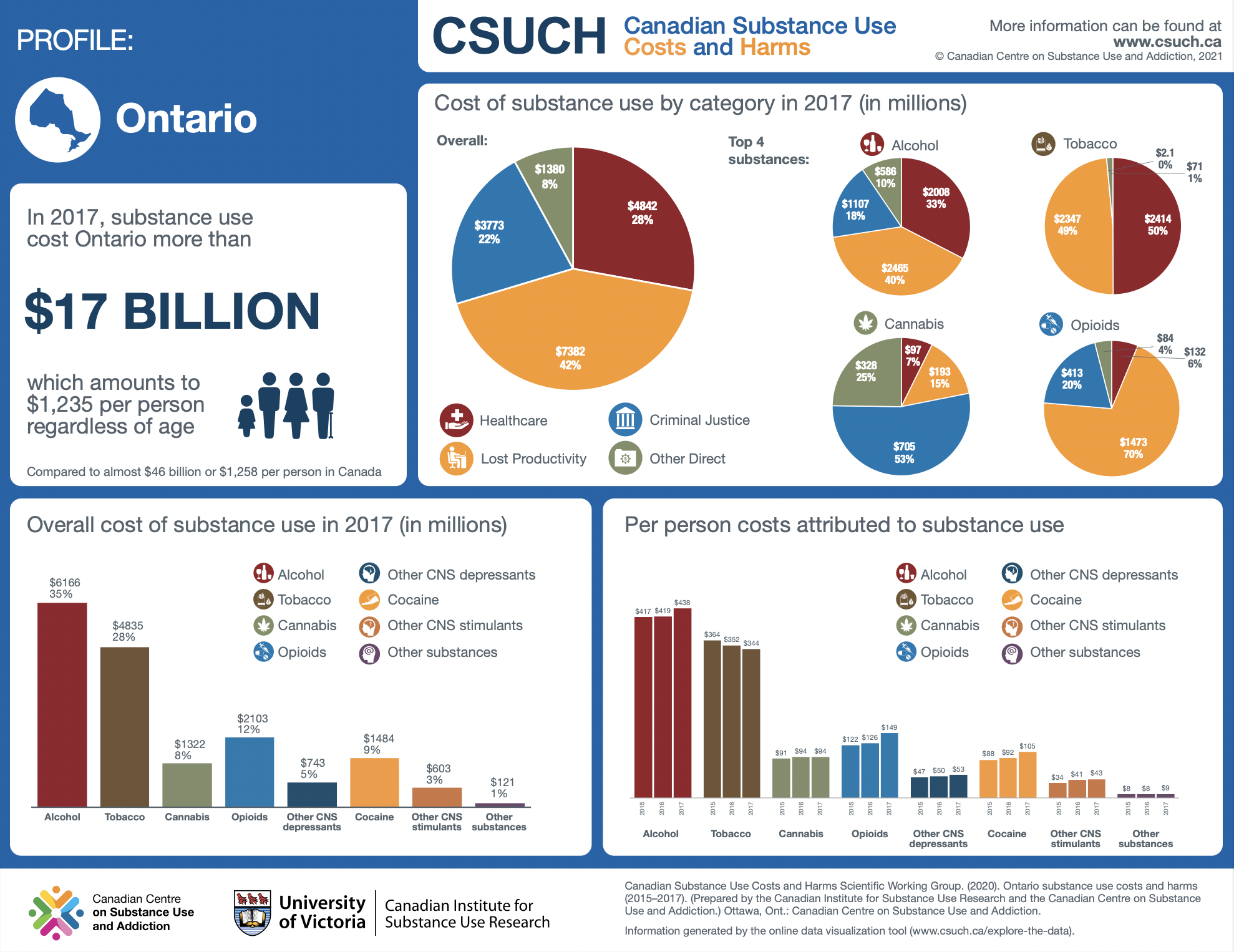1.3 Legal Versus Illegal Drugs
Jacqueline Lewis and Christine Miller
Psychoactive drugs may be classified as legal prescription medications (codeine and morphine), legal non-prescription drugs (alcohol, tobacco and cannabis), or illegal drugs (cocaine, LSD). The definition of substances as legal or illegal varies historically and cross-culturally according to existing legislation. For example, cannabis (or marijuana) is a psychoactive drug that is illegal in many countries, but legal for medical purposes in others, and in some countries it is regulated for recreational use (e.g., in Canada since the introduction of the Cannabis Act, 2018).
Some legal drugs are readily available, as illustrated by the images above.
Whether a substance is classified as legal or illegal is often dependent on how the substance in question is used. For example, although some opioids can be legally prescribed to people (e.g., codeine, morphine), these drugs can also be used illegally. This occurs if a prescribed substance is used by someone other than the person to whom it is prescribed, if legal prescription medicine is diverted to the illegal market (CCSA, 2020), or if opioids are specifically manufactured for the illegal market.
The problem with relying on notions of “legal versus illegal” is that such distinctions tend to be associated with assumptions of harm posed to the individual and society, with illegal psychoactive drugs being viewed as more harmful than legal ones. However, when one considers harm, it is actually the two most commonly used legal drugs, alcohol and tobacco, that cause the majority of drug-related harm (see CSUCH infographic below)(CSUCH, 2020). For example, harms associated with alcohol consumption include: injury and death tied to accident, impaired driving, violence, suicide, birth defects, and alcohol poisoning (APHA, 2019). A less commonly known harm related to alcohol consumption is the link between the alcohol-based beverage use and cancer (CCSA, January 2023; Roumeliotis & Witmer, January 8, 2022; Stockwell, 2019).
Click the link below to learn more about the new Canadian guidelines on alcohol and health from the Canadian Centre on Substance Use and Addiction (CCSA):
Canada’s Guidance on Alcohol and Health, Public Summary: Drinking Less Is Better (Infographic)

In addition to the harms tied to tobacco and alcohol use, are the health risks associated with both legal over the counter and prescription pharmaceuticals. Have you ever read the information sheet that come with every prescription drug or the warning labels on over-the-counter medication? While many of these pharmaceutical substances may not be psychoactive in nature, the interaction between them and other medications, or use of other legal and illegal psychoactive substances can lead to an array of health problems (Holland, 2017). As noted in the Drug Education Network (2019) video (below), “just because it is legal doesn’t mean it doesn’t cause harm.”
VIDEO: Facts About Drugs: What is the Difference Between Legal and Illegal Drugs
In the following video Maurice Dawe, from the Drug Education Network, talks about the problems with classifying drugs as legal and illegal.

